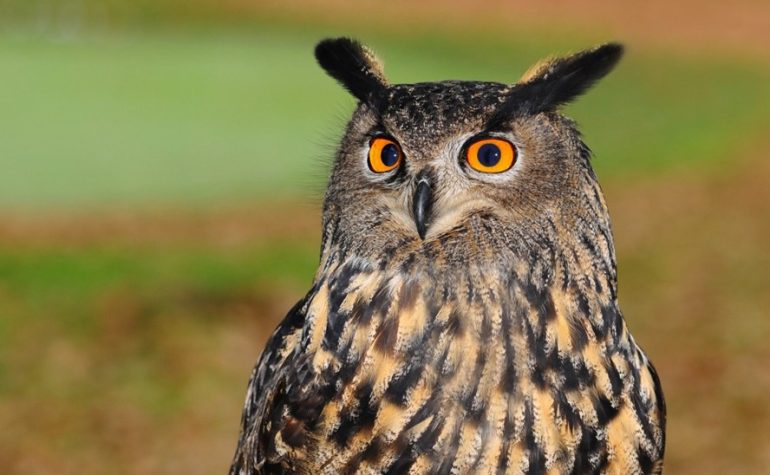Did you know that owls can see up to 100 times better than humans at night?
Owl eyesight is one of nature’s greatest achievements. Owls use their powerful eyes to hunt small prey at night, which they can see from up to 500 meters away.
Do you think you know everything about owl eyes?
Boost your wisdom with these fascinating owl eyesight facts!
Owls Have Huge Eyes
This fact may be no surprise if you’ve ever seen an owl. Owls’ eyes are enormous in proportion to their skulls. If humans had the same proportions, our eyes would look like softballs!
Owls’ eyes can make up to 5% of their total body weight. These large eyes host large pupils, which help them to see at night. After dark, more light from the moon can enter their pupils.
Owls Can’t Move Their Eyes
Have you ever noticed how owls seem to have a fixed gaze? Most birds actually can’t move their eyes. Owl eyes are round, not spherical, so they physically can’t turn in their sockets like human eyes.
However, owls can turn their heads about 270 degrees or about three-quarters of a full circle. Owls don’t have to move their eyes to see with their flexible necks!
Owls Can See in the Daylight
Some people believe that owls are “blind” in bright daylight, but this is not actually true. In far northern countries, nights get shorter in the summertime. If northern owls only hunted by night, they may not have enough time to catch prey before the sun rises.
Snowy owls are one species that commonly hunts during the day. Snowy owl eyesight is built to adjust to day and night conditions.
One study found that owls with dark eye color are more likely to be nocturnal. Barn owl eyesight is more equipped for hunting at night. Like the snowy owl, owls with light orange or yellow eyes are more likely to hunt during the day.
Owl Retinas Have More Rods
Both humans and owls have specialized cells in the retinas of their eyes. Rod cells help us see in low-light conditions, while cone cells process color and bright lights.
Human eyes have about 20 rod cells for every cone cell in the retina, while Owls have around 30 rods for every cone cell. This makes owl eyes exceptionally great at seeing in the dark.
Owl Eyes are Reflective
Have you ever shined a flashlight in the woods at night? If you live near cats and other wild animals, you’ve probably seen two glowing eyes peer back at you. There’s a good chance that those eyes are from an owl!
Owl eyesight is further improved by a reflective tissue called the tapetum lucidum. Any light that passes through the retina is reflected onto the rods and cones again.
Are you eager to find an owl in your midst? Click here to check out owl nesting boxes that bring the birds to you!
Owls Have Three Eyelids
That’s right; owls have three eyelids to protect their delicate eyes. The upper eyelid closes when the owl blinks, and the lower eyelid rises when the owl is asleep.
Owls have a third eyelid, called the nictitating membrane, which moves from the inner to outer corners of the eye. This membrane cleans and protects the owl’s eyes. Many other animals also have nictitating membranes!
Albinism Affects Owl Eyesight
Owls are one of many creatures (like humans!) that can be born with albinism. Albinism is a genetic mutation that affects the production of melanin and other coloring pigments.
Albino owls have solid white feathers and pinkish-red eyes. Unfortunately, like many animals with albinism, their eyesight is weaker than other owls. Luckily, they still have incredible hearing and flying skills!
The Ones Who See it All
Owl eyesight is a true miracle of evolution. These birds are some of the most well-equipped and graceful predators on Earth. Next time you see an owl, consider how well she sees you!
Did you enjoy learning these impressive facts about owl eyesight? Don’t miss out on our other fun animal articles!

